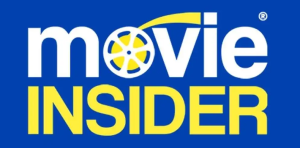The Amusement Park 2021

In this unsettling ride, a retired man becomes disoriented and trapped in a never-ending cycle of humiliation and despair as the horrors of aging manifest in chaotic crowds and twisted roller coasters, confronting the dark realities of growing old in America.
Does The Amusement Park have end credit scenes?
No!
The Amusement Park does not have end credit scenes.
Actors
Meet the cast of The Amusement Park and learn about the talented actors who brought the characters to life. Explore their roles and career highlights.
Links
Explore where to watch The Amusement Park online. Find reviews, ratings, and detailed movie information on other platforms like Metacritic, Rotten Tomatoes, TMDb or Wikipedia
Ratings
Discover how The Amusement Park is rated on popular platforms like IMDb, Metacritic, and TMDb. Explore audience and critic scores to see how this movie ranks among the best.

77
Metascore
5.5
User Score


%
TOMATOMETER

0%
User Score

62
%
User Score

4.44/5
From 16 fan ratings
Movie Quiz
Challenge your knowledge of The Amusement Park with an engaging quiz. Test your memory of the movie’s characters, plot twists, and unforgettable moments.
The Amusement Park Quiz: Test your knowledge about 'The Amusement Park' and its reflections on societal neglect toward the elderly.
Who introduces the film and sets the tone for its exploration of societal issues?
Plot Summary
Get the full story of The Amusement Park with a detailed plot summary. Dive into its themes, characters, and the twists that make it a must-watch.
The film begins with a poignant prologue delivered by Lincoln Maazel, highlighting the neglect and undervaluation the elderly face in society. He invites the audience to explore a metaphorical portrayal of this mistreatment.
In a stark white room, an elderly man, portrayed by Lincoln Maazel, sits bandaged and bloodied, his once pristine white suit now tarnished. Suddenly, another version of him enters—clean, cheerful, and optimistic. This younger counterpart attempts to engage with his weary self, insisting he should join him at the park, despite the elder’s protest that “there is nothing out there.” Undeterred, the younger man opens a door that seemingly leads to nowhere, but upon stepping through, he finds himself in a vibrant park.
As he strolls through the park, marveling at the ambiance, he encounters a ticket taker who cunningly exploits other older patrons, cheating them with minimal pay. The younger man buys tickets, which are represented as money within the park.
His adventure unfolds as he embarks on a rollercoaster, interacts with a train where an older passenger tragically appears to die and subsequently ignored while in a coffin, and witnesses a man losing his license due to poor eyesight. At the bumper cars, a staged “accident” happens that brings forth a police officer and a lawyer, but the younger man, struggling with his eyesight, realizes he is not seen as a credible source to help.
When he seeks a bite to eat at a food stand, he finds himself sidelined as wait staff cater to a wealthier patron. Ultimately, he manages to receive his meal, displaying his compassion by sharing it with other ignored elders around him.
While shopping for groceries, the man’s arms are laden, leading him to grab only a jar of peanut butter and some crackers. Attempting to connect with some children, he is unfortunately accused of being a “degenerate” by a younger individual and retreats, feeling humiliated. Lured into a building by more young people who promise fun activities, he discovers instead a cramped room of torturous exercise machines designed for elders. After breaking his glasses in the confusion, he stumbles upon a fortune teller. Observing a young couple inquire about their future, the fortune teller reveals a grim fate where they will reside in a dilapidated apartment, receiving little attention from neighbors or doctors. Frustrated by this vision, the young man reacts violently, striking the older man down.
Regaining consciousness, the park has grown eerily empty, save for three bikers who soon assail him and steal his tickets. As more people appear, they all disregard his plight. With scant resources, he heads to a medical center resembling a chaotic shop brimming with elder equipment, where he is hastily treated and given just a band-aid and cane before being expelled. In his quest for a retirement home, he falls victim to a pickpocket, who turns out to manage a freak show featuring casually dressed seniors. Upset by the display, the man attempts to leave but finds himself pursued by agitated patrons accusing him of escaping.
Finally, a glimmer of solace emerges when a little girl invites him to read The Three Little Pigs and share some chicken. Yet, her indifferent mother snatches the book away along with the little girl, driving the elderly man into tears. Leaving the piece of chicken behind, he trudges back to the white room, defeated and resigned. Moments later, a fresh and cheerful version of him re-enters, repeating the earlier scene while the elder watches on, powerless.
As the film draws to a close, Lincoln Maazel reappears, urging viewers to support the elderly through existing community programs, concluding with a hopeful note: “I’ll see you in the park… someday.”
Videos
See the latest videos related to The Amusement Park. Explore trailers, interviews, and behind-the-scenes content that give you a deeper look into the film.
Featured on this page

What's After the Movie?
Not sure whether to stay after the credits? Find out!
Check out our other apps:
Actors
Companies
Latest Movies
© 2025 What's After the Movie. All rights reserved.












